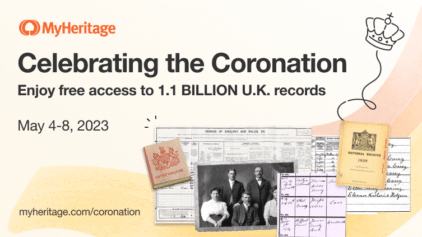 With the influence that Spanish culture has had around the world, you may very well have Spanish roots somewhere in your family tree.
With the influence that Spanish culture has had around the world, you may very well have Spanish roots somewhere in your family tree.
Research your Spanish surnames in MyHeritage’s historical record collections
For those unfamiliar with Spanish naming conventions, finding and exploring ancestors may be a little confusing.
Today we start with Part 1 of our Spanish Naming Conventions series – The Basics
We’ll progress beyond that in the next few parts of this series but, as with all things, let’s begin at the beginning…
Getting Started
Many of you will notice that Spanish names tend to be longer than in many other cultures. By longer I don’t mean they have more letters, I mean they have more words.
Before we get into why this is the case it’s important to understand that the concept of a “Middle Name” doesn’t exist in Spanish naming conventions.
Once you forget about the Middle Name, understanding the full name becomes significantly easier.
Throughout this post I’ll use the current Spanish Prime Minister, José Luis Rodríguez Zapatero, and his family, as an example to explain Spanish culture naming conventions.
Keep in mind though, that where I use the word Spain or Spanish, I’m really speaking about Spanish culture extending all around the world, not just culture from the country of Spain.
First/Given Names
In Spanish cultures, people either have one or two given names. For instance Juan or, like the Spanish Prime Minister, José Luis.
Note that, as mentioned above, Luis is not the Prime Minister’s middle name but part of a full, single, given name – José Luis.
Surnames
In Spanish cultures, people traditionally have 2 surnames.
The first is the paternal surname (apellido paterno), the father’s first surname, and the second is the maternal surname (apellido materno), the mother’s first surname.
As you may have realised, this means that what we would call the mother’s maiden name, is passed down a further generation than in traditional Anglophone cultures.
Going back to our friend José Luis Rodríguez Zapatero, using the information above we now understand that Rodriguez is his paternal surname and Zapatero is his maternal surname.
This point about the paternal surname coming first and the maternal surname coming second is an important one to remember, as we’ll discuss below in the paragraph about how to address someone by their surname.
Married Names and Children’s Names
In Spanish culture, women do not change their name when married.
What that means is that the mother, father and children in one family will all, generally, have different surnames.
For instance:
José Luis Rodríguez Zapatero is married to Sonsoles Espinosa Díaz (Espinosa is her paternal surname and Diaz is her maternal surname) and their children’s names are Laura Rodríguez Espinosa and Alba Rodríguez Espinosa.
Addressing Someone By Their Surname
When addressing someone by their surname in Spanish cultures, as a general rule you use their paternal surname.
So, José Luis Rodríguez Zapatero would be known as Señor Rodriguez, not Señor Zapatero.
Without trying to confuse you, it is important to note that dropping the paternal surname is not unusual when it is a very common one.
This is the case with the former Prime Minister of Spain, José Luis Rodríguez Zapatero, who, because of how common the surname Rodriguez is, is actually known as Zapatero.
That having been said, focus on the general rule and you should be OK.
Also, keep in mind that it’s becoming more popular amongst Hispanic cultures in the Americas to hyphenate the two surnames. This is an attempt to avoid confusion when dealing with Anglophone countries that aren’t familiar with Spanish naming conventions.
Let’s leave it there for now as this has been an excellent start and will help those of you unfamiliar with Spanish naming conventions to get up to speed on how these conventions are different to those you may be more familiar with. If you have an interesting Spanish surname, leave us comment below.












Maria Mercedes Monsalve Clemente
July 18, 2011
Hi, I am living now in Spain but I am Venezuelan in origin and I have never heard before arriving in Spain the use of the second surname as it does in the case of Zapatero or in Rubalcaba (minister). I think it is a particular case in Spain, and it would be interesting to trace when it began to happen, otherwise we will find in a trouble… Greetings!